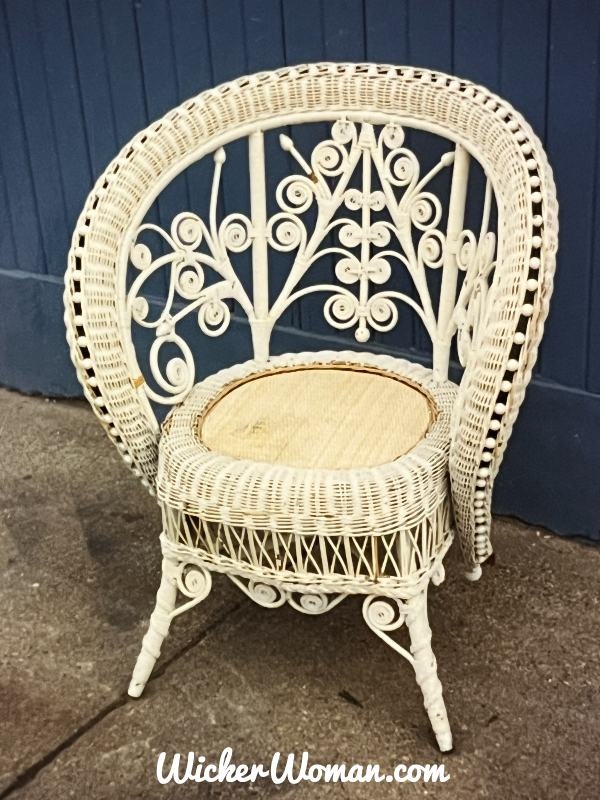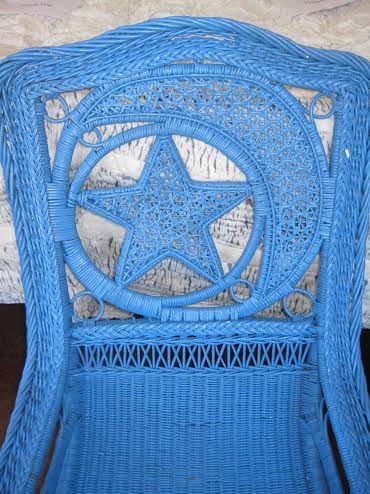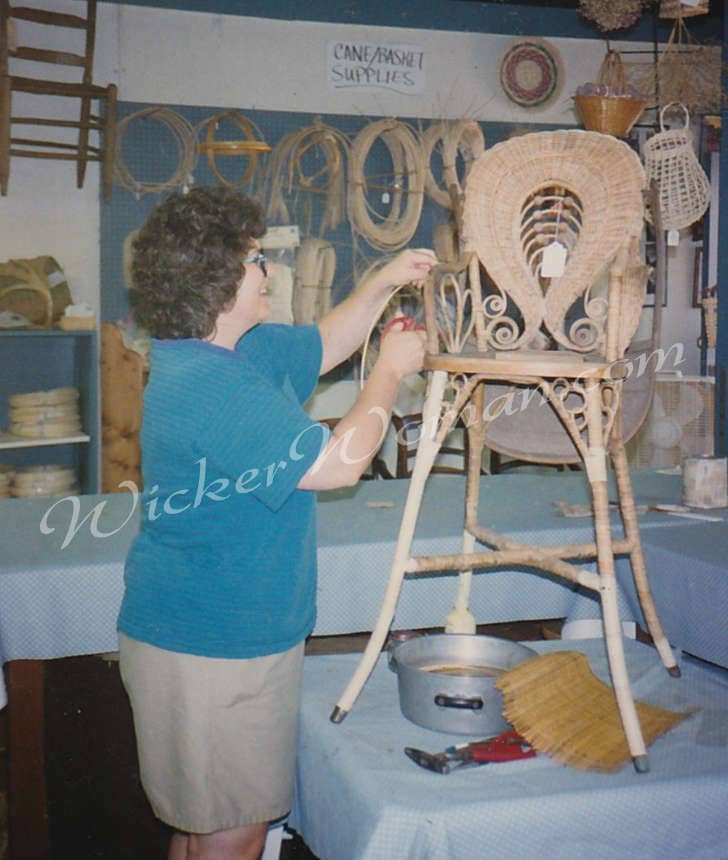Editor’s Note: Wicker furniture owners and clients constantly ask me if I could please tell them the value of their wicker furniture. But what they don’t realize is that they are asking me for a free appraisal of their wicker furniture, which I am not qualified to do.
Since I am not a certified wicker furniture appraiser and not technically qualified to establish a value for them, I refer them to the consummate appraiser and original “wicker guru”, Richard Saunders.
The following article, A Question of Value: Appraising Your Antique Wicker Furniture, was initially written by wicker furniture restoration expert, author, and certified wicker furniture appraiser, Richard Saunders, for the Five Year Anniversary issue of my newsletter, Wicker Woman’s Weavings.
And except for updating how many years Richard’s been an appraiser and his current contact information, this is the article graciously written for my newsletter published way back in November 2004.

A QUESTION OF VALUE: APPRAISING YOUR ANTIQUE WICKER FURNITURE
by Richard Saunders
I’ve been appraising antique wicker furniture for over forty-five years now and the question I’m most often faced with is “How do I know when to call in a professional appraiser?”
The answer depends on the reason you are trying to determine the value of a given piece or an entire collection. If you are simply trying to get a “ballpark” estimate on a piece you can do some research on your own to find the current FAIR MARKET VALUE by searching through price guides, going to auctions, attending antique shows and doing comparable searching online. You can usually find a comparable piece (similar age, design and condition) on which to gauge your value estimate.
However, if you need a written appraisal that will stand up as a dependable legal document you will have to hire a professional with experience in this specialized field. Certified appraisers can help you determine the value of your wicker pieces on any of the following criteria:
FAIR MARKET VALUE:
The most common type of appraisal, this is the price at which the property would change hands between “a willing buyer and a willing seller, neither being under any compulsion to buy or sell and both parties having a reasonable knowledge of relevant facts.” Fair Market value is also used for family division and divorce cases.
REPLACEMENT VALUE:
Basically, this is an evaluation for insurance purposes. It is the amount it would cost to replace a lost or stolen item of like value. Since antique wicker pieces are often unique as to finish, condition, design, age, and manufacturer, “replacement value” tends to run high as it takes into account the work involved in tracking down something similar to the piece you want to replace.
ESTIMATED VALUE:
This is what you’ll need if you’re buying or selling a piece at auction. The pre-auction estimate is an informal appraisal with the limited use of conveying to both the potential buyer and seller the range of value that an item can reasonably be expected to bring in normal circumstances. It is similar to a Fair Market valuation but it will take into account local conditions such as the time and location of the proposed sale. These values are often verbal and are not accepted by either insurance companies or the IRS.
LIQUIDATION VALUE:
In rare situations such as personal bankruptcy, one might need a Liquidation value in order to dispose of personal property immediately. In this unfortunate circumstance, the evaluation would almost always be the lowest determinable value, often half of the Fair Market value.
Professional appraisals should include the following:
- Statement of purpose (Fair Market value; Replacement value; etc.)
- Description of the object (including dimensions, condition, notations on any repair, materials used in the construction, manufacturer’s labels and design).
- Summary of the appraiser’s qualifications
- Statement of Value
- Statement of Disinterest (confirmation that the appraiser has no present or contemplated future financial interest in the piece in question).
- Date of Valuation
- Photographs of the Item
- Signature of the Appraiser
A qualified appraiser can help you protect the value of what you own by determining its true value on today’s antiques market.
An appraiser can also determine if your wicker pieces have been affected by inflation or recent changes in the market.
Insurance, resale, estate planning, moving damage, loss by fire or theft, divorce litigation there are many reasons why you may need to know the present value of a single piece of wicker or an entire collection.
Contact Richard for your next wicker furniture appraisal through WickerWoman.com in the Furniture Repair Directory-Wicker Experts section and tell him you read this article reprinted here on the Weavin’ Wicker Woman’s Blog!

What are your thoughts about this blog post?
Leave your comments below and share with your social networks!
~~Live Well, Laugh Often, Love Much ~~
Happy Weaving, until next time!





